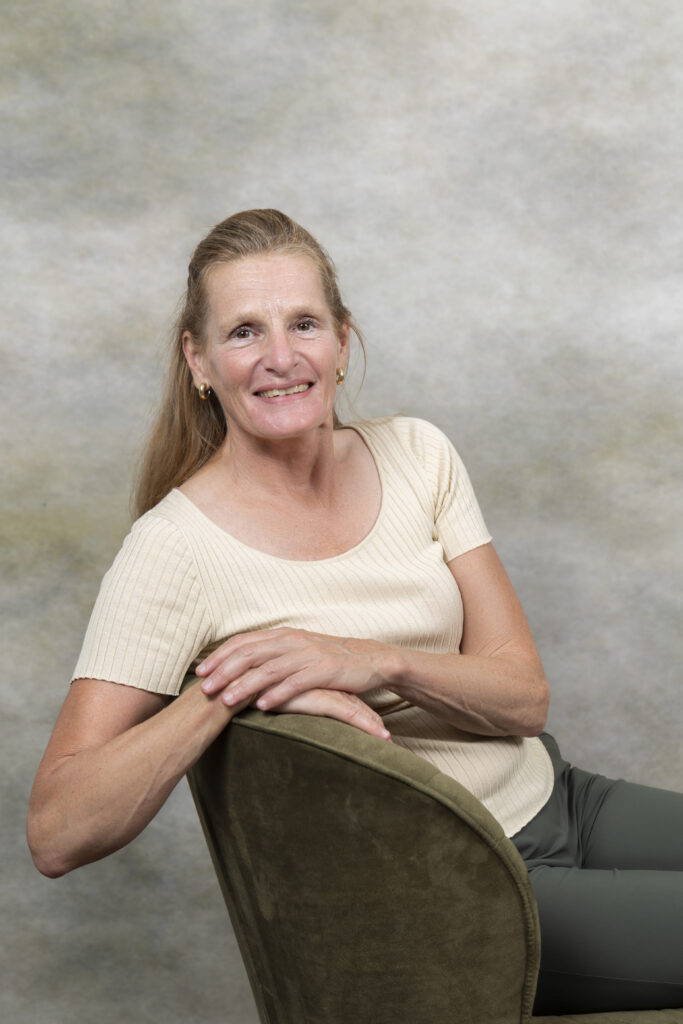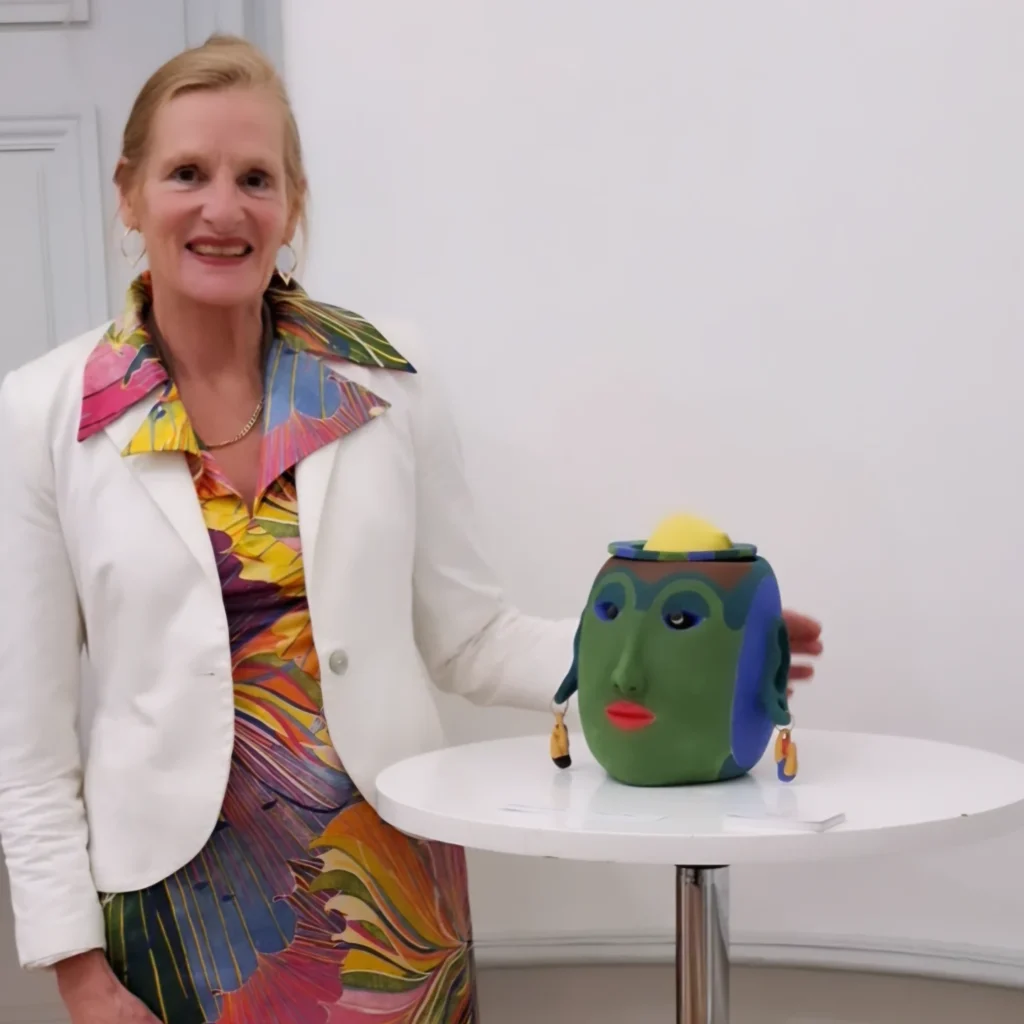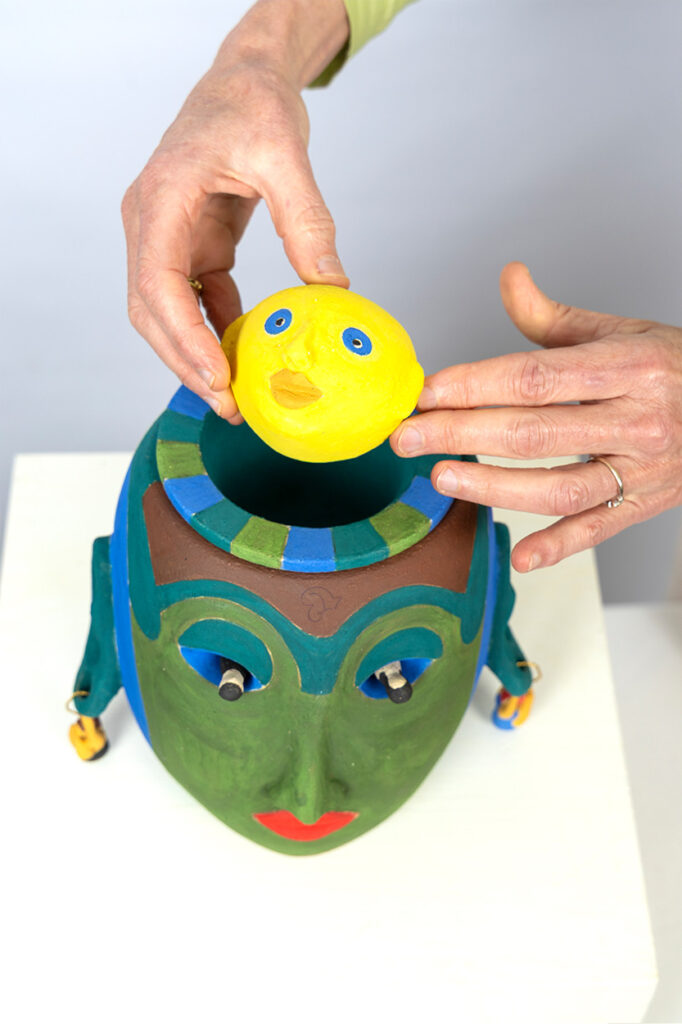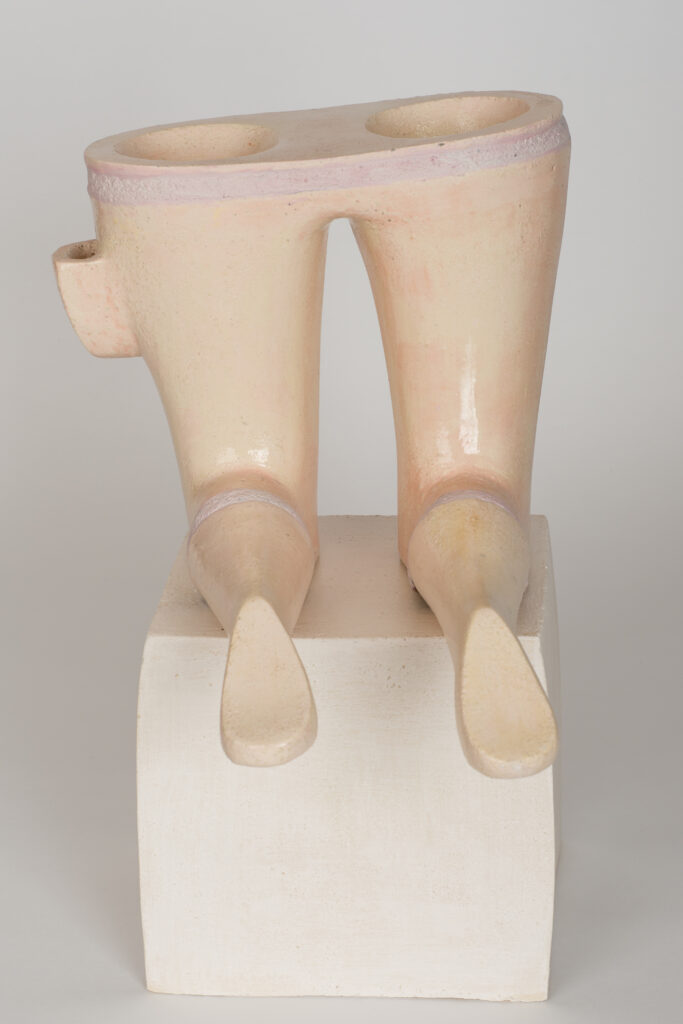About me
Who am I
Esther Lunter
Born in Bolsward, Friesland, The Netherlands, in 1966. Graduated from the Minerva Art Academy in Groningen in 1992.
Initially accepted for my paintings, I soon became fascinated with ‘exploring the backside,’ leading me to discover my true passion about the layers. I would give it form in ceramics.
Before pursuing art, I studied physiotherapy, driven by a desire to help people find balance. The act of alleviating physical discomfort transformed into molding clay. Assisting, seeking balance, and relieving pain remain key themes in my work. I create tools and objects with dual meanings reflecting life’s absurdity.
In clay, everything converged—the sensuality, freedom, and color through glaze. The process compels patient attention, offering creative freedom to shape my vision. Working with ceramics is a profound process to understand life, driven by elements like earth, water, air, and fire.
Inspiration for my art arises from everyday needs, personal experiences, and relationships. Ceramics tell an autobiographic story of my life. The artworks are colorful, rich in symbolism, with an intuitive character. My art mirrors universal human needs associated with ceramics, such as offering bowls and funerary objects.
The pinnacle of my work is when an artwork finds the perfect owner, and people are genuinely drawn to it. This feeling is magical. It’s beautiful to witness the intention embedded in my artwork genuinely meaning something to people, finding its rightful place.

esther lunter
ceramic sculptures
A sculpture for a trauma. An act of healing.
Keramisch kunstenares
My vision
Throughout the centuries, clay has served various purposes, such as the creation of pots and bowls, but it has also been used as a means to express abstract thoughts, like idols, small gifts, and urns.
In my ceramic sculptures, I have brought together various aspects of ceramics. They are both objects of beauty and functional items. They have the ability to open and close, creating space for preserving memories or tangible treasures, such as souvenirs.
These sculptures carry multiple meanings, combining aesthetics, ethics, and functionality. Their purpose is determined by what the owner chooses to place within them, making each piece tell a personal story.



